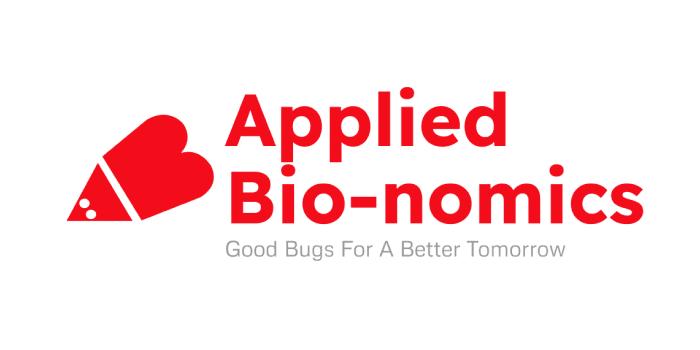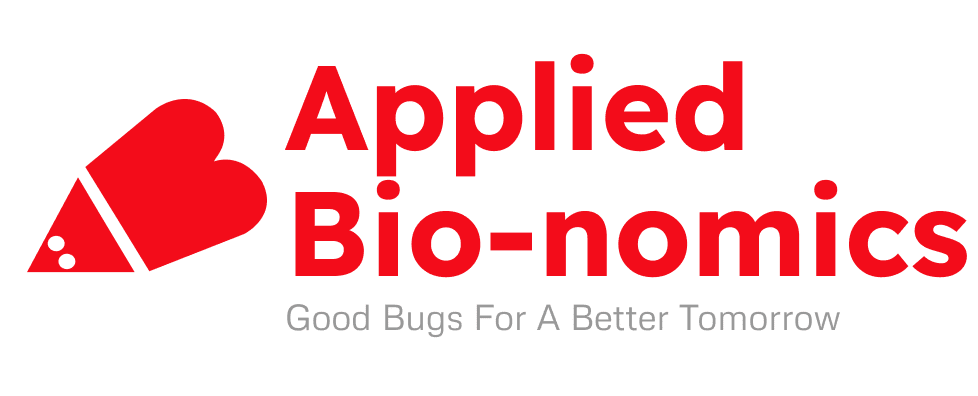Knowledge is the greatest tool in biological control; whether it is the knowledge of the grower to know what biological control agent to apply, and when or the knowledge of companies like ours to design and establish methods of maintaining healthy colonies and mass producing biological control agents, or the knowledge of researchers to find and explore new species and interactions in natural settings and apply that knowledge to biological control.
Due to the nature of our industry we must constantly be looking to nature to provide guidance on how we conduct biological pest control. Our inspiration comes from finding new species of insects and mites and learning about their interactions with other insects and mites. We further need to closely examine their habitat and environmental conditions to better learn how to mass produce safe and effective biocontrols. We do not limit ourselves in the tools or perspectives used in this way. Every material, species, and factor is carefully considered, because it is simply a law of nature that every species is food for another. As a non exclusive example, we have produced beneficial insects and mites or have been actively engaged in research and development of beneficial insects and mites with regards to the following:
Diets for predators or to feed a secondary food source:
Fermentation or decomposition based artificial diets including but not limited to yeasts (active or deactivated), bacteria, and fungi
Sugar based artificial diets including but not limited to fructose, glucose, sucrose, complex plant carbohydrates; human food sources and insect by products (honeydew).
Protein based artificial diets including but not limited to all animal and plant proteins,
Living or dead Aquatic invertebrates, their eggs or any part
Living or dead terrestrial invertebrates, their eggs or any part
Pollens, artificial pollens and any part of a plant
Carrier materials for rearing:
Plastic, wood, metal containers used to contain or restrict movement of invertebrates or maintain preferable environmental characteristics;
Living or dead plant material including but not limited to fruits and tubers, hydroponic plants, aquatic plants, and potted plants.
Paper products including but not limited to cardboard, newsprint.
Wood products including but not limited to wood shavings, shredded wood strings and fibres and sawdust.
Food grade media including but not limited to wheat bran, and rice hulls
Agricultural media that may be used in soil, to supplement soil or as an alternative to soil including but not limited to peat,
Other agricultural or food processing byproducts including but not limited to husks and hulls of millet, buckwheat, and rye.
Other media provided for surface area, size of particles, aeration, humidity and moisture control including but not limited to vermiculite, sand, perlite,
Rearing conditions to enhance survival, reproduction, feeding or any other aspect deemed preferable in rearing or otherwise in production:
Supplemental and artificial lighting including but not limited to differential lux, lumens, moles per surface area and differences in both quality and quantity of spectral light as well as the changes over time through various spectra, intensities or other qualities of light.
Temperature controls naturally or artificially produced for storage and dispersal, to affect temperature changes or maintain specific temperatures.
Feeding as a single diet, supplementary or to enhance any aspect of rearing by using frequencies and amounts including but not limited to feeding continually or regularly and feeding by providing a reproducing food
Air circulation including but not limited to screened containers, natural ventilation, forcing air mechanically or otherwise, and plumbing or ductwork to facilitate air.
Chemical makeup of air, media or diet can be modified for rearing enhancement.
Any and all species within the Phylum Arthopoda due to their suitability or potential suitability as potential predators or parasitoids or as agents of harassment and other methods of biological pest control, whether native, foreign or cosmopolitan and whether previously identified or not and including all life cycles and parts including but not limited to those in the following taxonomic classifications:
Ephemeroptera
Isoptera
Hemoptera
Lepidoptera
Odonata
Dermaptera
Coleoptera
Diptera
Orthoptera
Hemiptera
Neuroptera
Hymenoptera
Acariformes
Parasitiformes
Hexapoda
Araneae
Anostraca
Mesostigmata
Phthiraptera
Psocoptera
Blattodea
Mantodea
Phasmatodea
Plecoptera
Thysanoptera
Embioptera
Zoraptera
Megaloptera
Trichoptera
Siphonaptera
Mecoptera
Raphidoptera
Strepsiptera
Protura
Collembola
Diplura
Any and all species within the Phylum Arthopoda due to their suitability or potential suitability as potential food sources for predators or parasitoids or as agents of harassment and other methods of biological pest control, whether native, foreign or cosmopolitan and whether previously identified or not and including all life cycles, parts and byproducts including but not limited to those in the following taxanomic classifications:
Ephemeroptera
Isoptera
Hemoptera
Lepidoptera
Odonata
Dermaptera
Coleoptera
Diptera
Orthoptera
Hemiptera
Neuroptera
Hymenoptera
Acariformes
Parasitiformes
Hexapoda
Araneae
Anostraca
Mesostigmata
Phthiraptera
Psocoptera
Blattodea
Mantodea
Phasmatodea
Plecoptera
Thysanoptera
Embioptera
Zoraptera
Megaloptera
Trichoptera
Siphonaptera
Mecoptera
Raphidoptera
Strepsiptera
Protura
Collembola
Diplura
Application and delivery considerations including but not limited to:
Population size, packaging shape, airflow, media and design for distribution and labour considerations, for quality assurance including but not limited to mortality, fecundity, and mobility as well as protection from environmental factors such as sunlight or water or other factors not listed.
Carrier media, supplemental food, opening sizes and methods for distribution and labour considerations, for quality assurance including but not limited to mortality, fecundity, and mobility as well as protection from environmental factors such as sunlight or water or other factors not listed.
Distribution including but not limited to natural distribution including pheromones, supplemental food, trap plants, sentinel plants, banker plants/systems, providing additional media for mobility, changing environmental conditions including but not limited to light, windspeed and humidity to affect dispersal, predation, fecundity, parasitim, harassement or other factors associated with biological pest control. As well as Mechanical distribution including but not limited to aerial drops, distribution through forced air; mechanical spreading through automated or manual machine; applications by hand and combining with other media of any combination of the above and other distribution methods.
Application timing including but not limited to using natural or articficial light and circadian rhythms, natural or artificial air movements; artificial or natural changes or lack of change of humidity; natural or augmentative presence or lack their of of other invertebrates, chemical applications, residual chemicals.
Host plant considerations including but not limited to plant volatiles produced naturally, or under any condition; physical plant structure; chemical make-up; forced plant conditions such as fertilizer levels, or plant reactions due to environmental conditions; the presence or absence of target or non target pests, target or non target biological control agents, whether intertebrates, fungi, bacteria, nematodes, yeasts, or other as well as the chemical or physical plant reactions to the presence or absence of target or non target pests, target or non target biological control agents, whether intertebrates, fungi, bacteria, nematodes, yeasts, or other.
Environmental considerations including but not limited to light quality and quantity or the change of light over any given period of time. Air movement, vapour density and humidity quality and quantity or any change of either over time. Overall temperature controls as well as heating and cooling methods and the change of temperature over time
Interactions of pests, predators, plants or other, whether positive or negative, with naturally or non naturally produced chemicals including but not limited pesticides, fungicides, herbicides, fertilizers, micro and macro nutrients or other applications or exposures in all crops.
We do not believe in genetic modification of biological control agents due to the inherent risks it poses to our environment. However, we recognize all of the individual traits associated with all species and in consideration of all the biological pest control and mass rearing factors listed, but not limited to those, above and how they may be enhanced, inhibited or selected for. We aim only to select for favourable traits through selection during the natural life cycle of an individual or population.
We do not support patenting of living organisms, or of any combination of predator, prey, carrier media or rearing method as our research and development program has being established through the work of publicly funded researchers with the goal of providing biological pest control to the benefit of all people and our environment. The foundations of their work are to be inquisitive and exploratory with all species, their interactions with others and their preferable habitat and media. Thus, it is the laws of nature that dictate who eats who and where.

